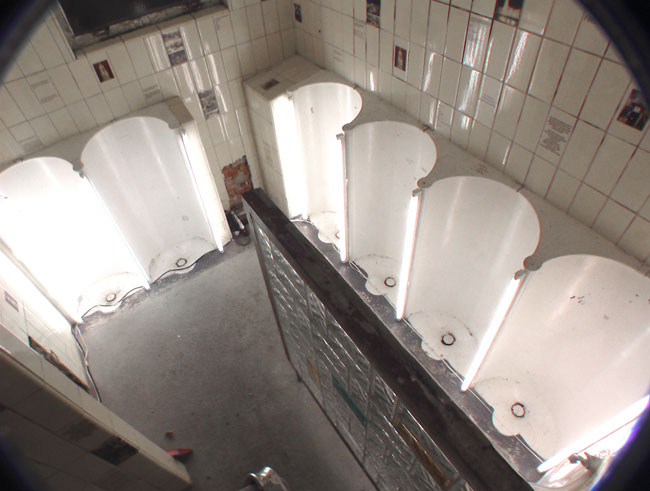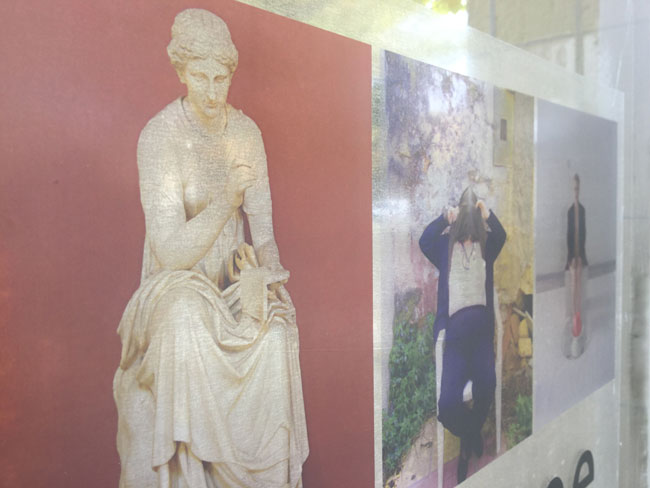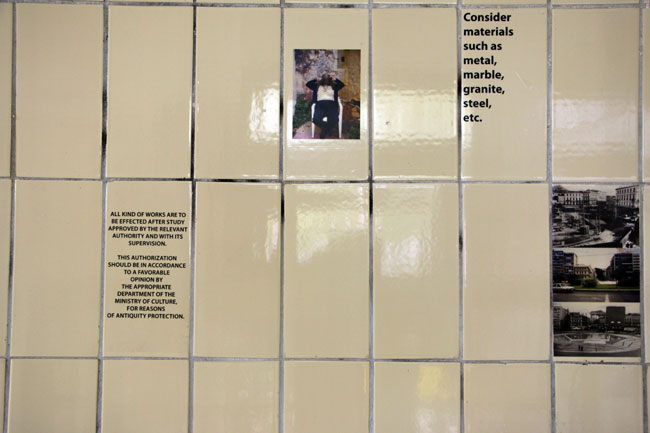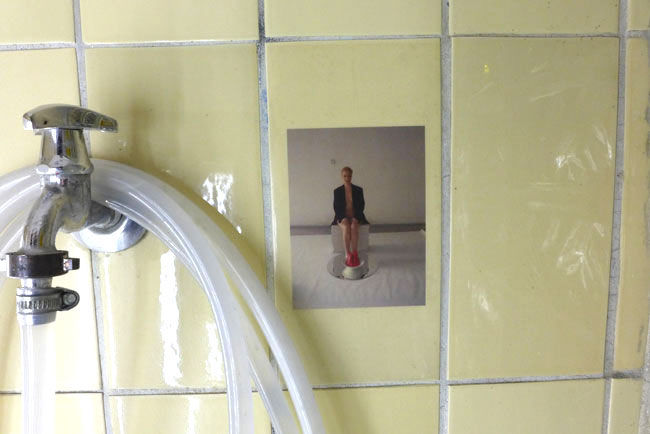|
Calliope - oder wie ein öffentlicher Platz ins KloHäuschen passen kann --> English down 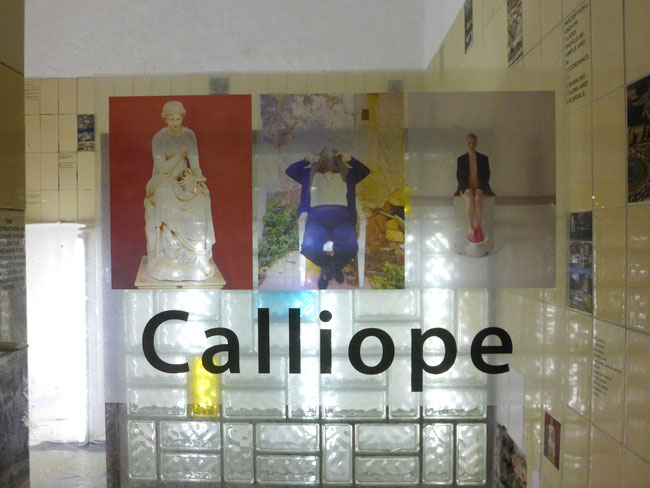 Der Omonoia Platz ist der älteste und zentralste Platz von Athen. Vormals 'Othon Platz' genannt, bekam er seinen Namen "Omonoia" (Eintracht) in 1862, nach dem Sturz des Königs. Der Omonoia Platz ist ein sehr gutes Beispiel für die Wechselwirkung des öffentlichem Raums und seinen sozialen Aspekten. Ins kollektive Bewußtsein ist der Omonoia Platz als eine öffentliche Landschaft im Umbau eingegangen, als Niemandsland. 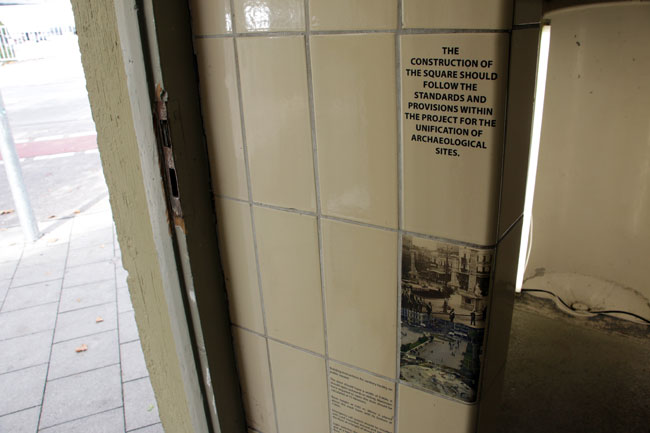 In 1934 gab es auf dem Platz acht grosse skulpturale Konstruktionen, die auf ihm platziert waren, um die Löcher des Lüftungssystems der U-Bahn Station zu überdecken. Jede dieser Konstruktionen präsentierte die Statue einer sitzenden Muse. sie wurden 'Die Musen von Omonia' (Musen der Eintracht) genannt. Und obwohl es traditionsgemäß eigentlich neun Musen sind, wurden aus Gründen der Symmetrie auf dem Platz nur acht von ihnen installiert. Calliope, die neunte Muse, befand sich "underground", also unter der der Erde, gerade neben den öffentlichen Urinalen. Seitdem bezeichnet der Name "Calliope" die Toilette, eine Metonymie, die besonders gern im Umgangston der griechischen Armee verwendet wird. Nach einigen Jahren wurden die Musen abgebaut und der Omonoia Platz durchlebte eine Reihe von ästhetischen und architektonischen Veränderungen, die ihn zu einem typischen Fall von unglücklicher Stadtplanung gemacht haben. Der Verbleib der Calliope-Statue ist unbekannt.  ++++++++ ZOOM ++++++++ picture by Campus Novel ++++++++ Campus Novel appelliert an Calliope als eine allegorische "persona non grata", um sich mit der Frage nach dem kollektiven Gedächtnis und der Rolle von Kunst und Architektur in der Entwicklung einer nationalen Identität und moderner Geschichte auseinanderzusetzen. Mit der sinnbildlichen Platzierung der Calliope im KloHäuschen, das ja früher auch als öffentliches Urinal gearbeitet hat, spüren sie einer urbanen Legende nach, und noch etwas mehr sehen sie darin eine Möglichkeit, um die Beziehung der archäologischen Vergangenheit zum aktuellen Konzept städtebaulicher Erfahrung zu heilen. 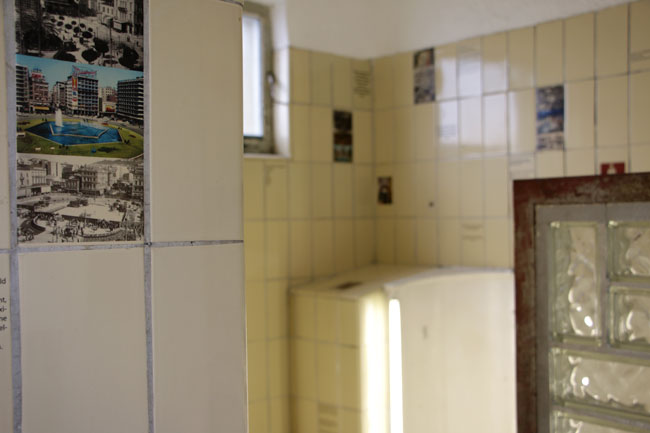 Campus Novel wurde im November 2011 gegründet und arbeitet als Künstlergruppe zwischen Athen und Berlin. Mit ihren Projekten versuchen sie, die Sicht auf Überzeugungen und Konventionen der aktuellen westlichen Zivilisation zu verschieben, mit dem Ziel, Umstände herzustellen, aus denen neue Annahmen und Beziehungen entstehen mögen. Oft beschäftigt sich die Gruppe mit den verschiedenen Aspekten einer Archäologie der Gegenwart als Teil einer retrospektiven Forschung nach neuen Referenzen. Ihre Projekte umfassen Elemente aus verschiedenen Feldern (Philosophie, Architekture, Zeichentheorie, Performance), um eine möglichst dialektische Form, frei von vorbesetzter Bedeutung vorzuschlagen. Campus Novel sind Giannis Cheimonakis, Giannis Delagrammatikas, Foteini Palpana, Yiannis Sinioroglou und Ino Varvariti.
|
|||||

